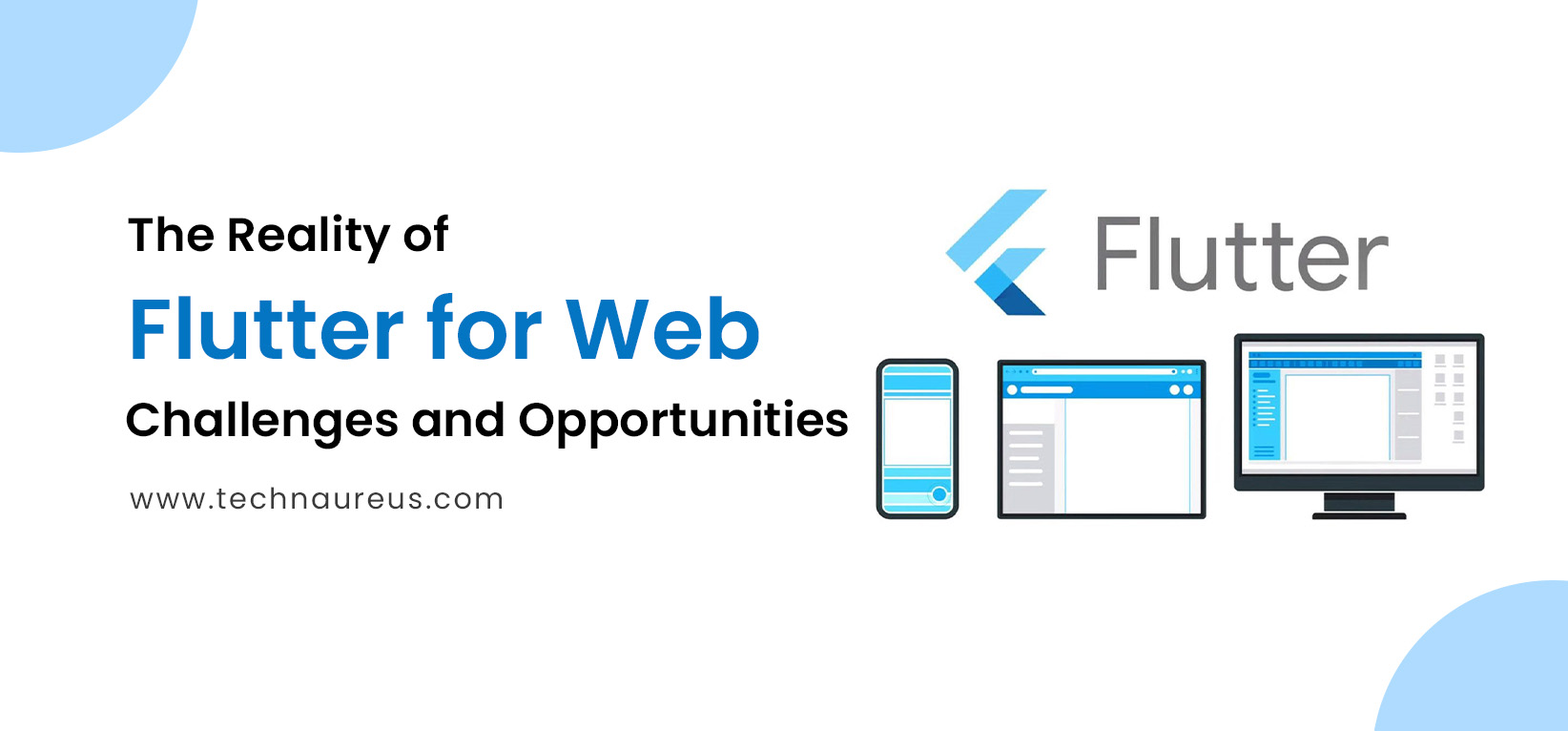Nishma KVAug. 29, 2025
Have you ever built a mobile app in Flutter and thought, “What if I could run the same code on the web?” That’s exactly what Flutter for Web promises: one codebase for multiple platforms, including browsers.
But while this sounds exciting, developers quickly learn that bringing Flutter apps to the web isn’t always smooth sailing. There are real strengths — and real challenges — to consider.
In this post, we’ll break down the opportunities Flutter for Web offers, the common hurdles you might face, and what this means if you’re considering it for your next project.
Flutter for Web is part of Google’s Flutter framework that lets you run Dart code directly in modern browsers. Instead of writing separate web code in JavaScript or React, you can use Flutter’s widget system and run it on:
This approach makes Flutter especially appealing for teams already building mobile apps with Flutter, since much of the codebase can be reused.
One of the biggest advantages is code reusability. If you already have a Flutter mobile app, much of your business logic and UI components can also run in the browser. This can reduce development time and cost.
Flutter uses its own rendering engine (CanvasKit or HTML). That means your app will look almost identical across devices, without relying on the quirks of different browsers. For brands that care about consistent design, this is a big win.
Flutter makes it relatively straightforward to ship your app as a PWA. This allows users to install your app from the browser without going through app stores — useful for lightweight tools, dashboards, or internal apps.
With Google actively supporting Flutter, the ecosystem is expanding. Frequent updates, growing community packages, and support from big companies make Flutter a technology worth keeping an eye on.
While Flutter performs well on mobile, the web is a different environment. Rendering complex animations or large data-heavy pages can feel slower compared to traditional web frameworks like React or Vue.
Not all browsers handle Flutter equally well. For example:
Unlike HTML-first frameworks, Flutter renders the UI inside a canvas. This can make it harder for search engines to crawl and index your content. While workarounds exist, Flutter isn’t the best fit for SEO-heavy websites like blogs or news portals.
While Flutter’s mobile ecosystem is strong, some plugins and packages don’t fully support the web yet. You may need custom solutions, especially for things like file handling, authentication flows, or browser APIs.
Flutter for Web can be a great choice when:
It may not be the best option for:
Flutter for Web isn’t a silver bullet — but for the right projects, it’s a powerful option.
Flutter for Web is still maturing. It shines when used for apps that prioritize consistent design and cross-platform reach but may struggle in SEO-heavy or performance-critical environments.
If you’re already working with Flutter, it’s worth experimenting on the web to see how far it can take your project.
What about you? Have you tried Flutter for Web? What challenges or wins did you face? Share your experience in the comments!
Yes, but it depends on the use case. It’s excellent for apps that need cross-platform support but less ideal for SEO-focused websites.
Not fully. Since Flutter apps render inside a canvas, search engines may struggle to index content. It’s better for apps than content sites.
In most cases, yes. Business logic and many UI widgets can be reused, but you may need tweaks for web-specific behavior.
Yes, many apps are in production, but expect trade-offs. Performance and browser quirks may require extra optimization.
It’s best for PWAs, dashboards, admin panels, and internal tools where SEO isn’t critical.

0